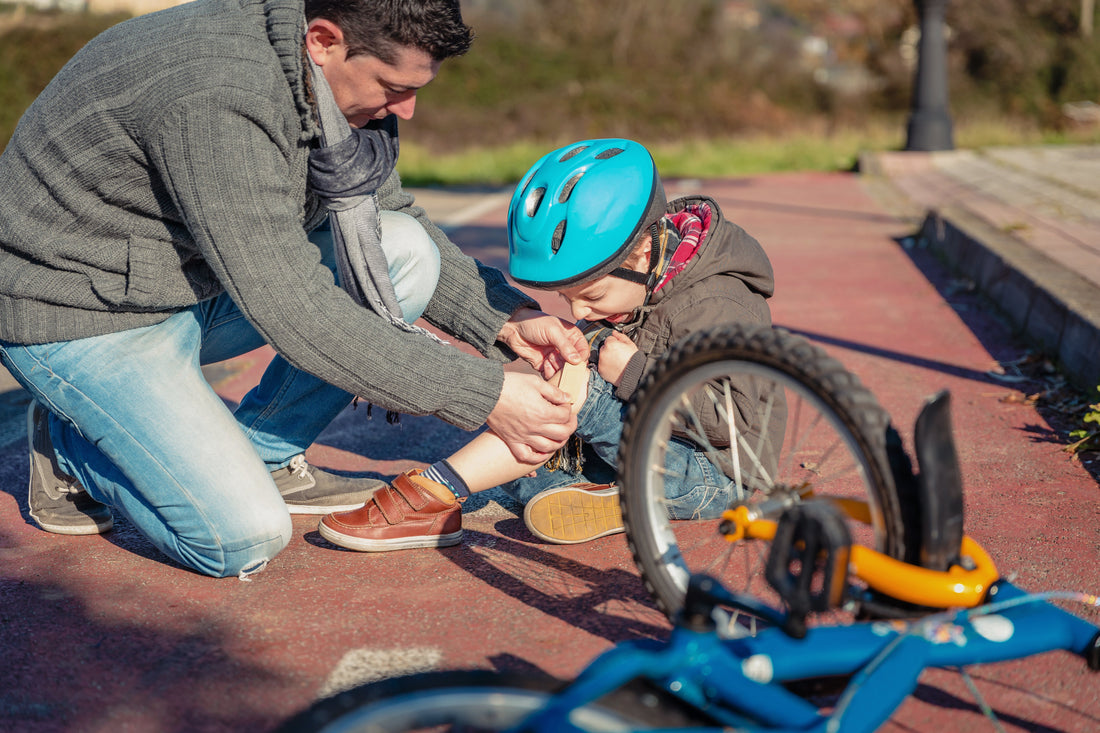
How Our Reactions Shape Our Kids
Share
Every parent has been there: your little one takes a tumble, bumps their head, or scrapes their knee. For a split second, they pause—and then their eyes dart to you. They’re not just looking to see if you noticed. They’re looking to you for how they should feel about what just happened.
This is one of the most powerful—and often overlooked—parts of parenting: our kids use us as mirrors for how they should react to the world.
Why Our Reaction Matters
When a child gets hurt, they often don’t immediately cry because of the pain—it’s the uncertainty. They’re scanning your face for clues: “Am I okay, or should I be upset?”
If you gasp, look panicked, or rush in with wide eyes, your child absorbs that anxiety. The result? Tears, fear, and sometimes even a bigger meltdown than the injury itself.
If you stay calm, smile, or gently joke about it while still checking they’re safe, your child feels reassured. They learn that while things might sting, they’re manageable.
Over time, this teaches resilience. They learn to handle discomfort without spiraling into fear.

The Balance: Calm but Caring
Of course, this doesn’t mean ignoring your child’s pain. Safety always comes first—check for real injuries. But you can do that while keeping your tone relaxed and reassuring. A calm, lighthearted “Oops! That was a big tumble, huh? You’re okay, buddy” goes a lot further than a panicked gasp.
Even in moments of genuine hurt, your calmness can reduce their stress and help them bounce back quicker.
Beyond Bumps and Bruises
This principle applies to so much more than scraped knees. Our kids are constantly watching us to understand how to handle life:
New Experiences – If you approach something new with curiosity and excitement instead of fear, your child learns to embrace challenges instead of avoiding them.
Frustration – When you stay patient during stressful moments (like traffic or spilled milk), your child learns how to regulate their own emotions.
Failure – If you treat mistakes as opportunities to learn, your child won’t fear trying new things. Instead, they’ll develop a growth mindset.
Social Situations – If you approach people with kindness, confidence, and respect, your child will mirror that in their own interactions.

How to Use This to Your Advantage
Think of yourself as the emotional thermostat of your home. The energy you put out sets the tone for how your kids respond. Some simple ways to practice:
Pause Before Reacting – Take a breath, check in with yourself, then respond.
Smile and Reframe – A bump becomes a “whoopsie,” spilled milk becomes “let’s clean this up together.”
Model Confidence – Show your child that problems can be handled calmly and with a sense of control.
Stay Consistent – The more often you react with calmness, the more your child internalizes it as normal.
Final Thought
Our children don’t just listen to what we say—they study how we live. By choosing calmness, positivity, and resilience in our reactions, we give them the tools to face life’s inevitable bumps and bruises with courage.
So the next time your little one falls down, remember: they’re watching you. If you show them calm, they’ll learn calm. If you show them strength, they’ll grow stronger.
Parenting isn’t about being perfect—it’s about modeling the kind of resilience and joy we hope our kids carry with them forever.
